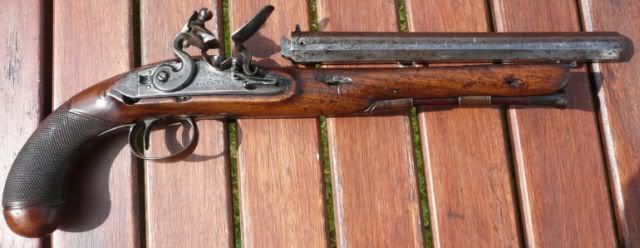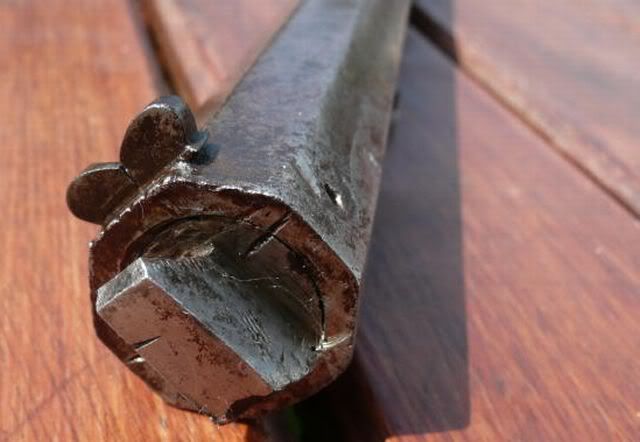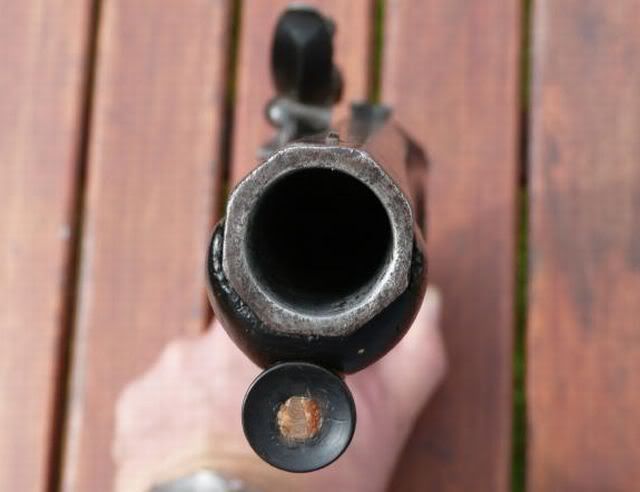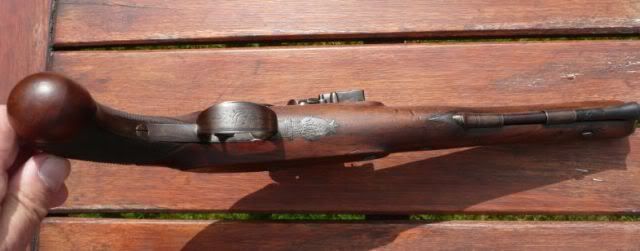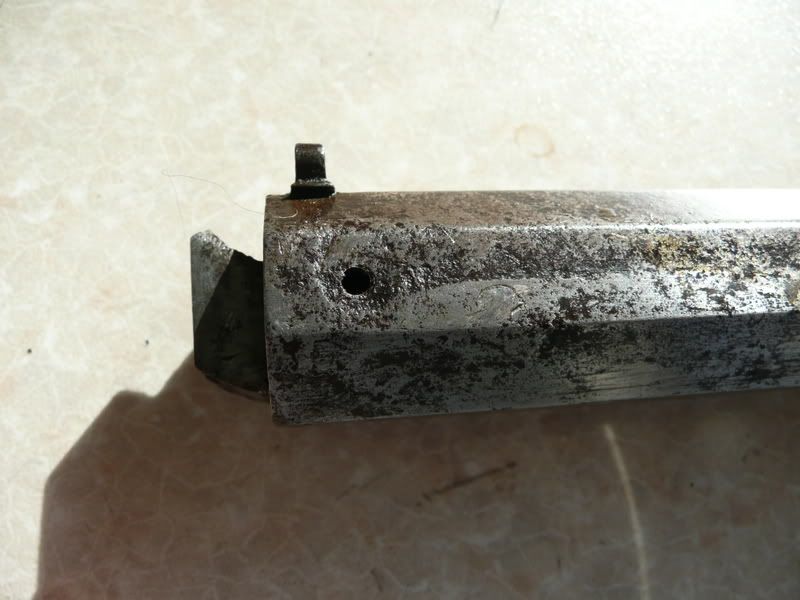Brian the Brit
36 Cal.
- Joined
- Aug 17, 2007
- Messages
- 66
- Reaction score
- 0
Not being able to afford a Baker rifle (real or repro), last night I took the plunge and bought a much cheaper, original English flintlock pistol with the intention of bringing it back into use after more than 150 years in storage.
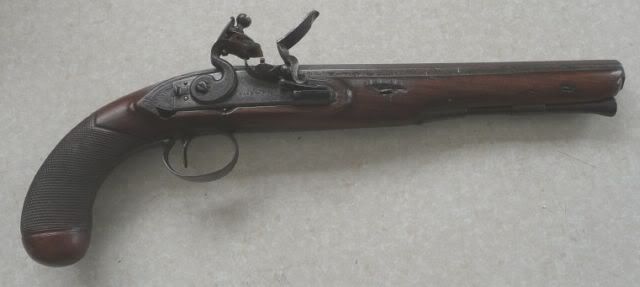
The pistol was made made by George and Charles Barwick of Norwich who were in business from 1797 to 1804 so it can confidently be dated to 'circa 1800'. The condition is pretty good but not so fine that I would hesitate to shoot and clean it.
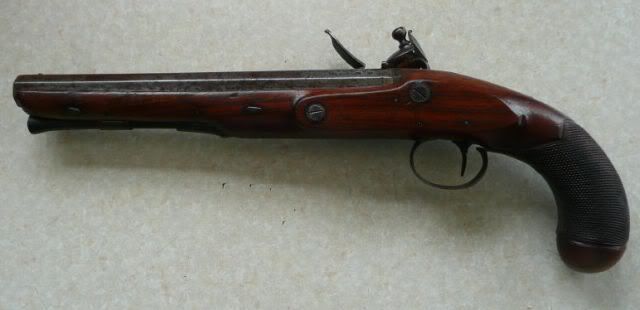
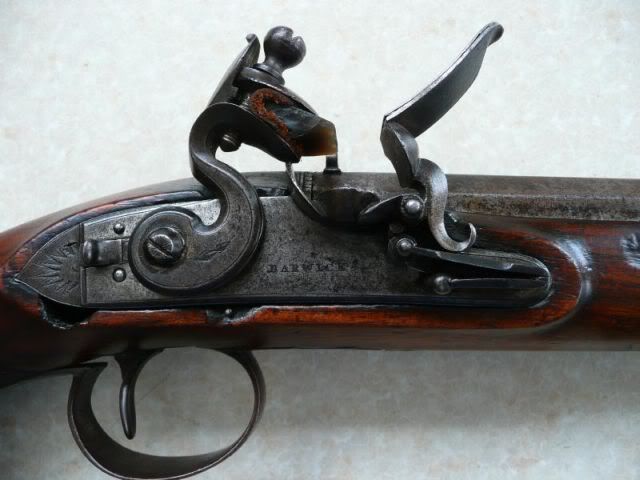
The picture above shows the lock plate just below the rear of which can be see a semi-circular area of missing wood just where the sear sits. The wood seems to have been carved out deliberately possibly to stop the sear binding on the wood? (The sear itself shows signs of having been worked on too at some time).
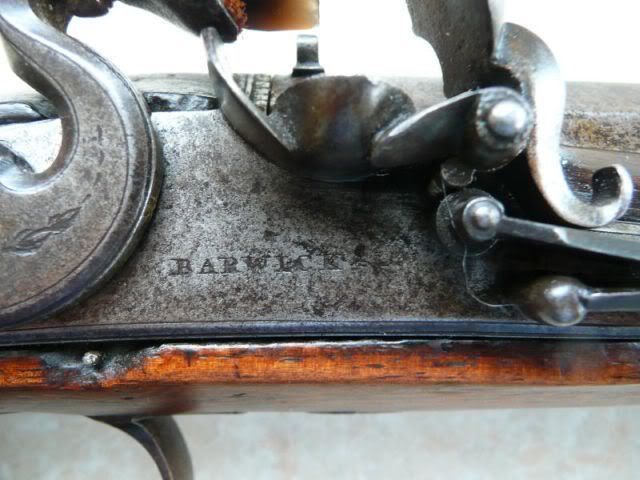
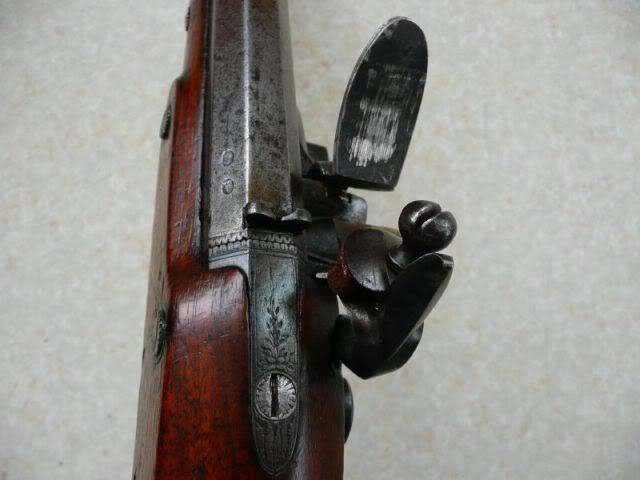
This final shot shows the top of the pistol with the rear sight and original proof marks.
I've had the frizzen re surfaced with a thin piece of hardened steel that is soldered on (I've seen examples of this on other original flintlocks and didn't want to risk breaking the frizzen in an attempt to case harden it again.) It now sparks very well but I haven't yet had an opportunity to load and fire it.
The barrel is 9" long, hook breech, smoothbored with some light internal pitting (not serious). The pistol is, I think, nominally a '20 bore' with a bore diameter of 0.593" for most of its length tapering very slightly to 0.596 at the muzzle (this does not seem to be due to wear - cone tapering to facilitate loading, I wonder?)
The barrel is slightly swamped and the pistol is beautifully balanced. It feels like an extension of the arm when pointed - much nicer than the Italian reproductions that I have handled. The ramrod appears to be original and has a worm at the tip for withdrawing an unfired charge.
I'm sure that some gun dealers would try to pass this pistol off as a 'dueller' because of the sights but I'm more inclined to think of it as an 'officer's pistol' of the Napoleonic War period but I'm open to persuasion. What do the experts think?
Also, I'd appreciate advice on:
1: What size ball to use?
2: Thickness of patch material?
3: Starting charge of black powder?
I can't wait for that first shot with this antique pistol and if it doesn't blow up on me (gulp!), I'll post a range report asap.
Brian

The pistol was made made by George and Charles Barwick of Norwich who were in business from 1797 to 1804 so it can confidently be dated to 'circa 1800'. The condition is pretty good but not so fine that I would hesitate to shoot and clean it.


The picture above shows the lock plate just below the rear of which can be see a semi-circular area of missing wood just where the sear sits. The wood seems to have been carved out deliberately possibly to stop the sear binding on the wood? (The sear itself shows signs of having been worked on too at some time).


This final shot shows the top of the pistol with the rear sight and original proof marks.
I've had the frizzen re surfaced with a thin piece of hardened steel that is soldered on (I've seen examples of this on other original flintlocks and didn't want to risk breaking the frizzen in an attempt to case harden it again.) It now sparks very well but I haven't yet had an opportunity to load and fire it.
The barrel is 9" long, hook breech, smoothbored with some light internal pitting (not serious). The pistol is, I think, nominally a '20 bore' with a bore diameter of 0.593" for most of its length tapering very slightly to 0.596 at the muzzle (this does not seem to be due to wear - cone tapering to facilitate loading, I wonder?)
The barrel is slightly swamped and the pistol is beautifully balanced. It feels like an extension of the arm when pointed - much nicer than the Italian reproductions that I have handled. The ramrod appears to be original and has a worm at the tip for withdrawing an unfired charge.
I'm sure that some gun dealers would try to pass this pistol off as a 'dueller' because of the sights but I'm more inclined to think of it as an 'officer's pistol' of the Napoleonic War period but I'm open to persuasion. What do the experts think?
Also, I'd appreciate advice on:
1: What size ball to use?
2: Thickness of patch material?
3: Starting charge of black powder?
I can't wait for that first shot with this antique pistol and if it doesn't blow up on me (gulp!), I'll post a range report asap.
Brian






